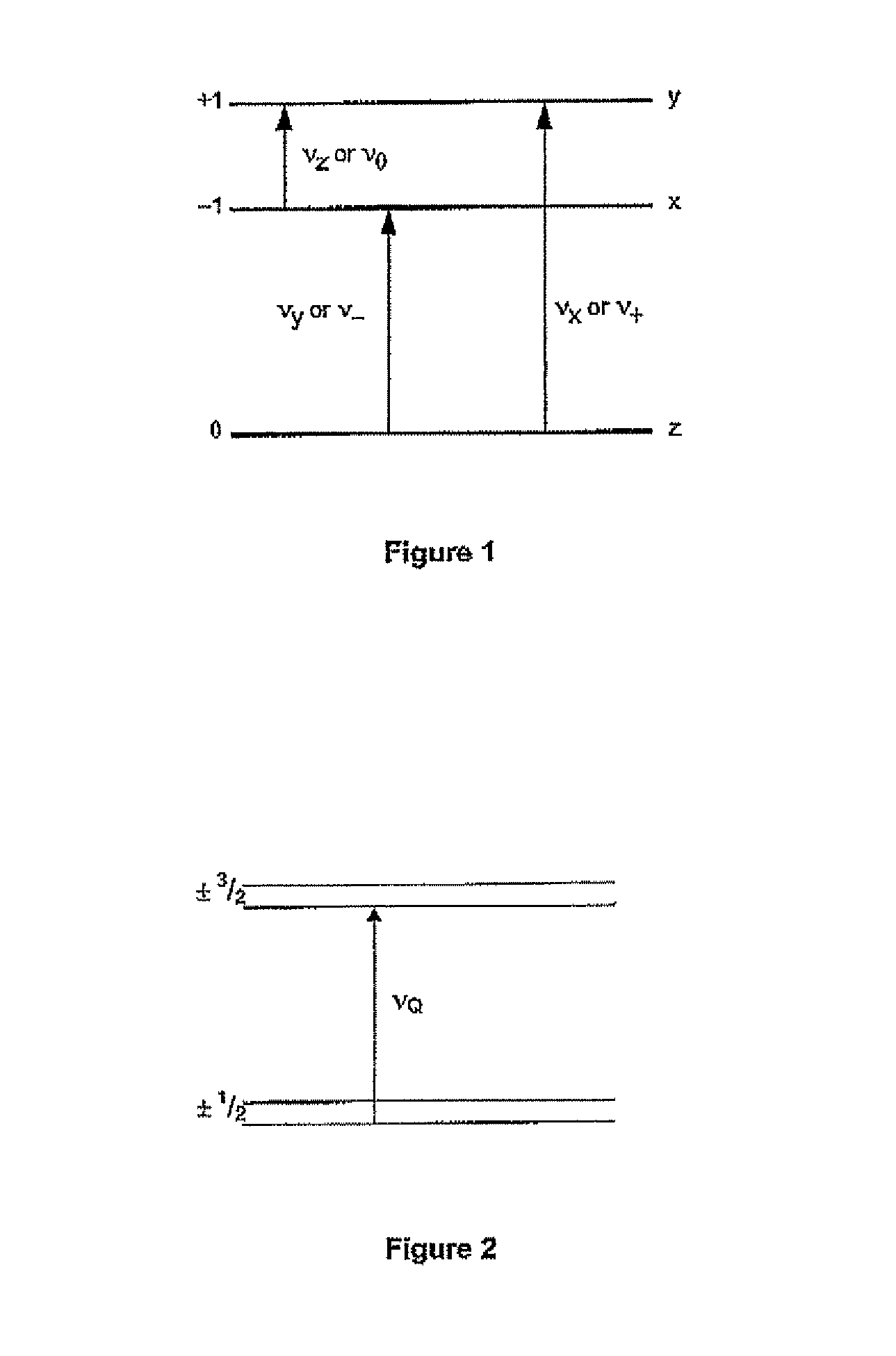System and method for improving the analysis of polymorphic chemical substance forms and concentrations using NQR
a polymorphic chemical substance and analysis system technology, applied in the field of chemical substance analysis, can solve the problems of inherently destructive, time and effort required in sample preparation, speed and quality of decision-making, etc., and achieve the effect of non-invasive, non-destructive and fas
- Summary
- Abstract
- Description
- Claims
- Application Information
AI Technical Summary
Benefits of technology
Problems solved by technology
Method used
Image
Examples
sixth embodiment
[0240]The sixth embodiment is substantially the same as the preceding embodiment, except that it uses a different technique for generating a frequency distribution of the NQR signal than the ETE and the 2-D Fourier transform technique described in the preceding embodiments, thereby providing an alternative measure of the crystal quality, homogeneity, purity and the mechanical handling to which the tablets have been subjected.
[0241]In the present embodiment, a two-frequency NQR method is used, which is applicable when two transitions of a given nucleus are connected, i.e. have an energy level in common, to derive information on the angular distribution of inhomogeneities in the EFG. This method is used to produce both polarisation and coherence transfer.
[0242]In order to produce coherence transfer, the pulse generating and transmitting means of the present embodiment generates a pair of 90° pulses separated by a variable delay t1, and applies it to one transition ν1 followed by a 90°...
seventh embodiment
[0247]The seventh embodiment is substantially similar to the preceding embodiment, except that it employs the use of a three-frequency NQR method for determining the frequency distribution of the specimen being analysed in lieu or in addition to the two-frequency method.
[0248]In the three-frequency method, excitation at the two lower frequencies of 14N, ν0 and ν, generates a signal at the highest frequency ν+ without any pulse being applied at that frequency, so there is no dead-time problem. Compared with results obtained using the two-frequency method, there is much more information on line broadening, e.g. distinguishing between correlated and uncorrelated effects. However, there is a loss in signal intensity and so three sets of orthogonal RF coils are required.
[0249]Accordingly, the present embodiment involves the arrangement of three sets of orthogonal RF coils, configured as shown in FIG. 18 of the drawings, and the analysing program is modified to perform a three-frequency N...
second embodiment
[0258]The requirements for a technique that produces reproducible line-widths are similar to those of the These requirements include that the temperature is measured, the field within the coil is homogeneous, and Q switching; and all of these are performed in this embodiment.
[0259]The pulse sequences used, however, are different. The pulse sequences used are any of those as described in the first embodiment. Hence, in this embodiment, firstly the calibration is performed by measuring the temperature, to know exactly where the NQR frequency line will occur. Then at least two, preferably more, calibration samples are measured: some of which have poor crystallinity and some of which have the required crystallinity. All of these samples are measured in the NQR spectrometer using the pulse sequence techniques described in the first embodiment and the bounds for line-widths are determined. These are then used as detection criteria to determine if the substance meets the quality control r...
PUM
 Login to View More
Login to View More Abstract
Description
Claims
Application Information
 Login to View More
Login to View More - R&D
- Intellectual Property
- Life Sciences
- Materials
- Tech Scout
- Unparalleled Data Quality
- Higher Quality Content
- 60% Fewer Hallucinations
Browse by: Latest US Patents, China's latest patents, Technical Efficacy Thesaurus, Application Domain, Technology Topic, Popular Technical Reports.
© 2025 PatSnap. All rights reserved.Legal|Privacy policy|Modern Slavery Act Transparency Statement|Sitemap|About US| Contact US: help@patsnap.com



